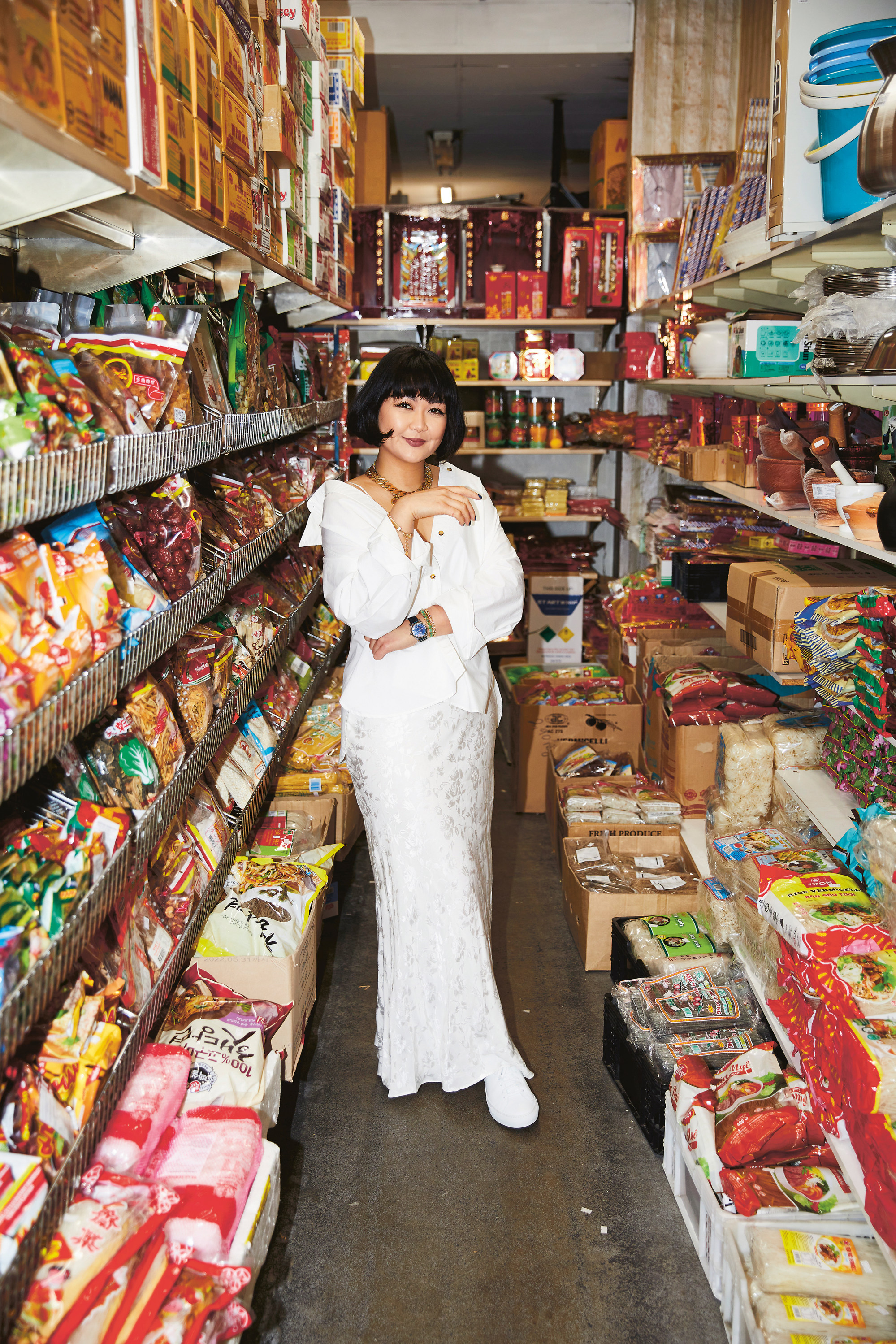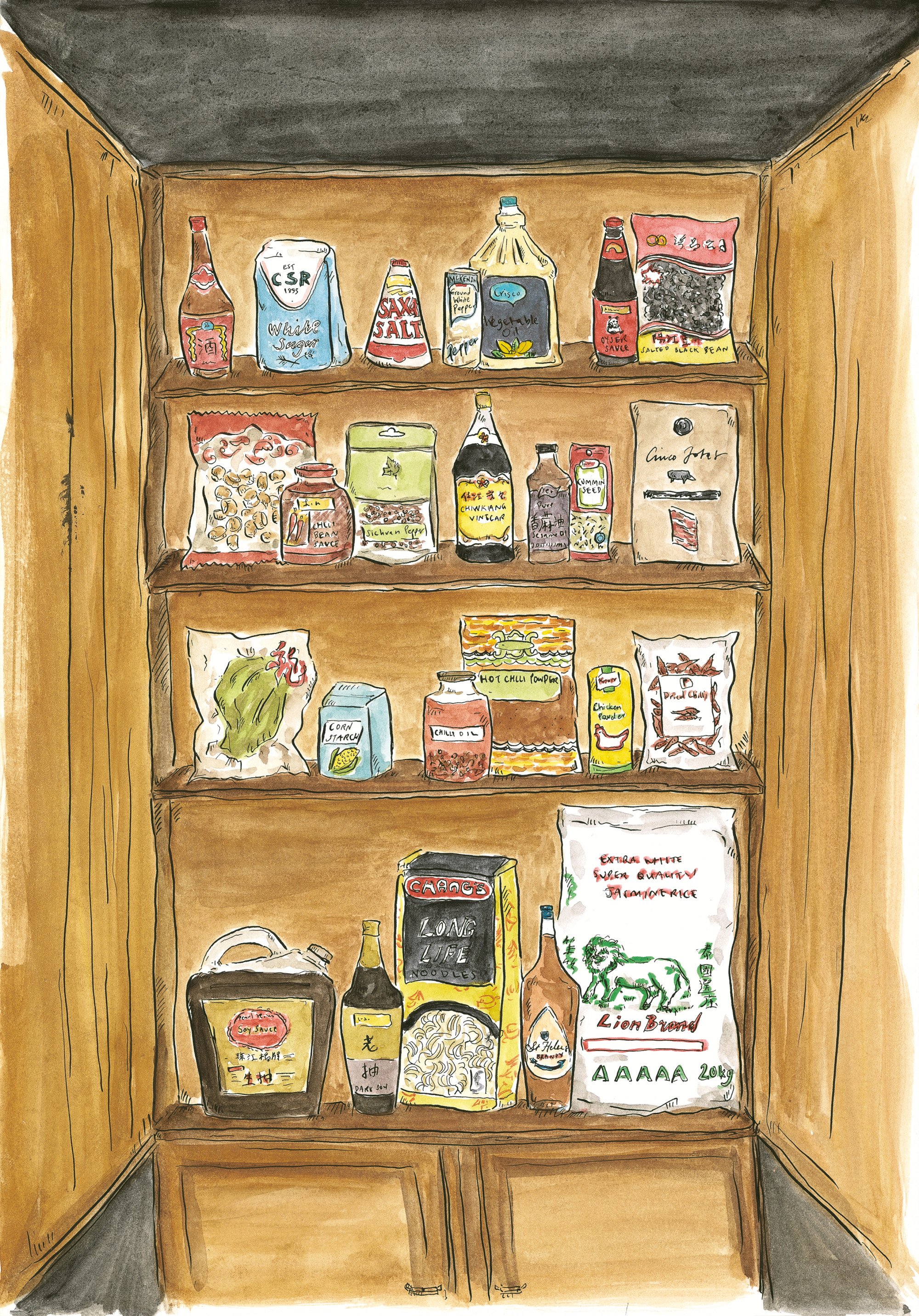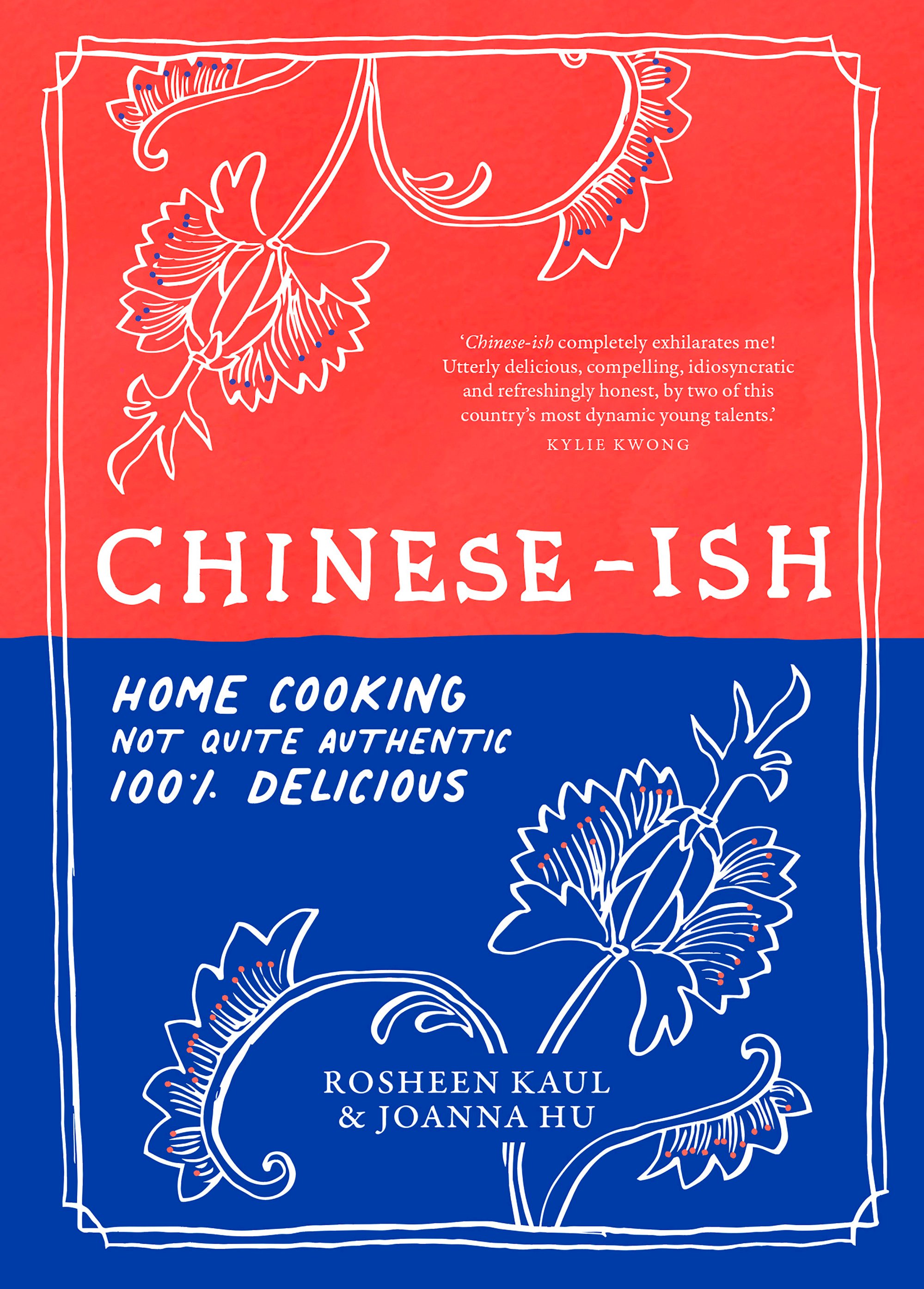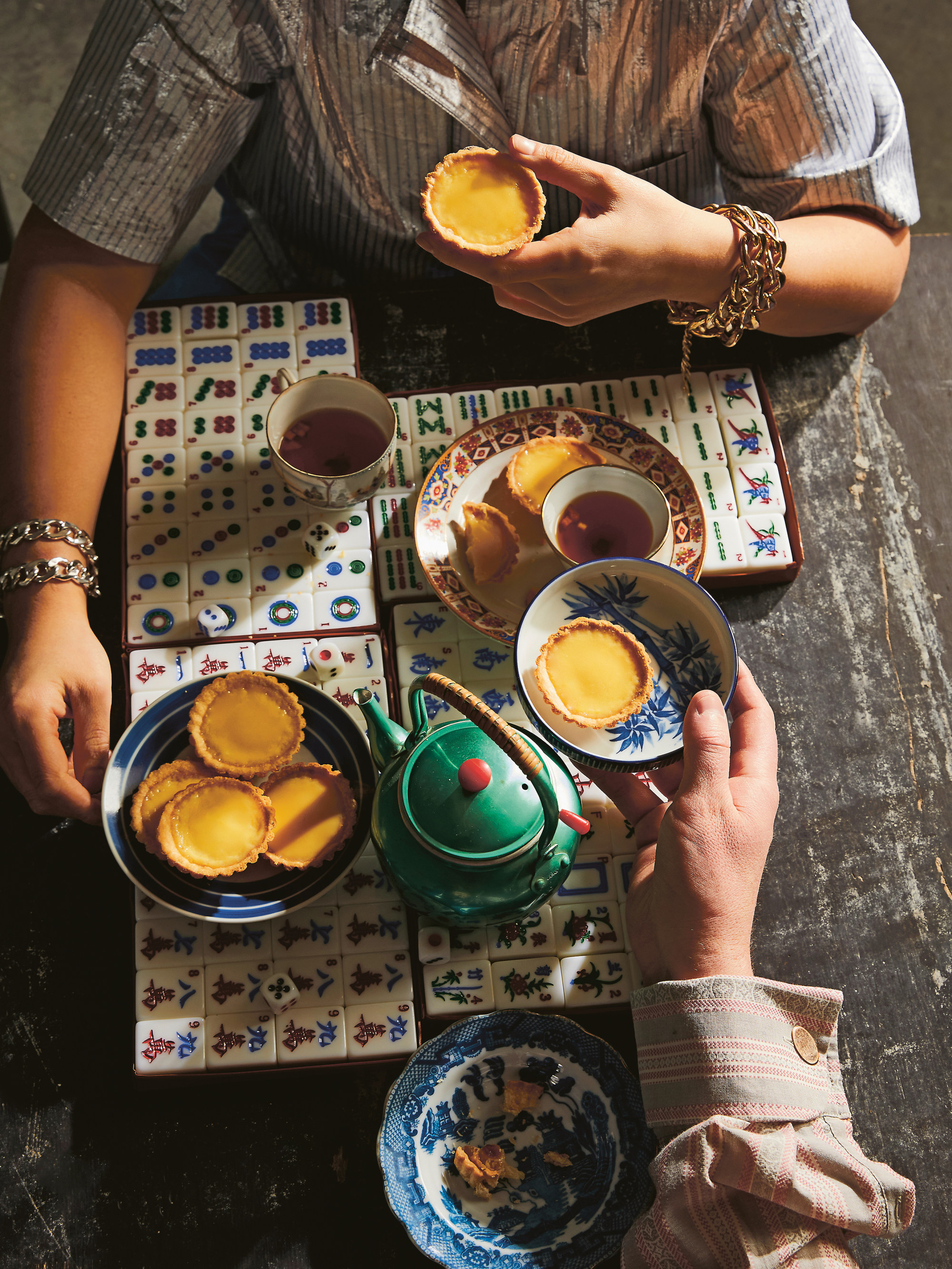
Chinese recipes and ‘stories of our culture’ in Chinese-Ish – but don’t think of it as a playbook for authentic Asian cuisine, say its co-authors
- The culinary identities of chef Rosheen Kaul and illustrator Joanna Hu have been forged by their diverse experiences as Asian-Australians
- In Chinese-Ish: Home Cooking, Not Quite Authentic, 100% Delicious, the pair invite keen home cooks to explore various ways of approaching Asian cuisine
Every dish name represents a recipe in the book, and each has its own distinct personality and aesthetic – its own “handwriting”. It is a strong visual marker of the character of Chinese-Ish as a whole, and representative of co-writers Rosheen Kaul and Joanna Hu’s melting pot of cultural experiences.
Kaul is the celebrated head chef of Etta restaurant, in Melbourne’s Brunswick district in Australia, where she cooks a genre-bending menu of dishes that skirt continents – you might find heirloom tomatoes served with crab crackers and Thai basil one day, then greenlip abalone and lardo skewers with smoked abalone soy another.
Born in Singapore to a Kashmiri father and a mother of Chinese-Filipino descent who was adopted by an Eurasian mother and Indonesian father, Kaul’s upbringing was awash with diverse Asian influences.

“When we were in Singapore, I was too young to be asked the question, ‘Where are you from?’ It was when we moved to Australia when I was a little older that I was confronted with it for the first time.”
London diners want authentic Chinese food – forget gloopy chop suey
“Ageing has a funny way of showing you the fallacies and traumas of your youth,” she writes. “Some of this trauma might be attributed to the potent political messaging towards Asians in the early 1990s, and some to the silly adolescent desire to erase everything that makes you different.”
The shared experiences of Kaul and Hu have dovetailed into what has become a powerful and poignant book about memories, eating and emotions, and finding pride in their modern mishmash of an identity.

The duo decided on “Chinese-Ish” as a book title to aptly describe the idea that the recipes and points of view are representative of their own experiences while challenging the notion of authenticity. “[It] means that we aren’t beholden to one set of rules and regulations about how to approach the topics in the book,” says Hu.
“It was important for us to state that our cookbook was not conventionally ‘authentic’ Chinese, as the other cultural influences in our lives have had a strong effect on how we see the world,” adds Kaul.
The book is divided into three chapters. The first, “Chinese Cooking 101”, introduces the building blocks of Asian cuisine. The second, titled “The Rebellion: How to Disappoint Your Parents”, features off-piste recipes such as “Chinese-ish snacks that feel kinda wrong”, including a Sichuan sausage “sanga” (sandwich).
Educating the dining public is so important, as misuse of Asian ingredients and techniques can be so callous and disrespectful
The two hope that the book will resonate with Asian communities, but not act as a playbook for Asian cuisine.
“This book is authentic to us as Asian-Australians, but not authentic in its conventional understanding,” says Kaul. “Frankly, unless you live in a cultural vacuum, authenticity – as in an undisturbed, ‘pure’ expression of a culture – can hardly exist in our globalised world.”
Daughter finds handwritten hoard of mum’s recipes, writes a cookbook
“I think the attention on the lack of Asian representation in Western media spaces in general has really come to the forefront in the last few years,” says Hu. “Sometimes all it takes is for someone to see a face that looks like theirs for them to believe an opportunity is possible, and this will only grow as each new face may inspire 10 more like them.”
Kaul also notes how traditional Asian cooking techniques and ingredients have slowly found their way into the mainstream over the past few years, and interest is only growing – particularly in Australia, which has seen waves of Chinese students coming to study in the country.
“I’m seeing more woks being used in Western kitchens as a rise in appreciation for smoky, charry wok hei [a char flavour associated with skilful use of the wok] flavours that don’t involve a charcoal or wood-fire grill.

“It only makes sense, then, that Asian cooks and chefs who wield these flavours with a depth of understanding that comes from a lifetime of exposure are given the platform to speak and represent their own cuisines. Educating the dining public is so important, as misuse of Asian ingredients and techniques can be so callous and disrespectful.”
According to Kaul, in Melbourne at least, the taste for Chinese food is now insatiable: “You’ll find plenty of non-Chinese Australians happily sweating away in Sichuan restaurants, booking family-sized tables at Yunnan restaurants and eating Lanzhou noodles with gusto.
Why Chinese cuisine beats French cuisine for variety
It is why she and Hu see Chinese-Ish as a way to create that space for keen home cooks to explore various ways of approaching Asian cuisine.
“We couldn’t write a regional Chinese cookbook, but we could write an Australian-Chinese one, and interweave it with stories of our culture and heritage,” she says. “The context was most important.”
Chinese-Ish is published by Murdoch Books

Chongqing hot & sour noodles
Serves 4
Also known as suan la fen, this Sichuan street food dish of bouncy potato noodles in a sour and numbing broth is flavourful, textural, bright, fresh and packed full of toppings. All you need are some basic Chinese pantry ingredients to build this bowl of seriously good times.
Ingredients
-
200g (7 oz) dried sweet potato or mung bean (cellophane) noodles, soaked in cold water for 1 hour to soften and then drained
-
2 tablespoons vegetable oil
-
4 cloves garlic, minced
-
1 teaspoon ground Sichuan peppercorns
-
1 teaspoon five spice powder
-
¼ cup (60ml) chilli oil, or use Lao Gan Ma chilli oil
-
¼ cup (60ml) light soy sauce
-
1/3 cup (80ml) Chinkiang black vinegar
-
2 cups (500ml) hot stock, or use a good-quality store-bought stock
-
4 spring onions (scallions), sliced
-
1/3 cup (50g) ya cai (Sichuan pickled vegetables)
-
2 tablespoons roasted peanuts
-
1 tablespoon sesame seeds
-
Handful of coriander (cilantro) sprigs, finely chopped

Method
1. Cook the softened noodles in a saucepan of boiling water until tender, 8–10 minutes. They will still be chewy, but should be fully translucent when cooked. Drain and rinse with warm water, drain again and set aside.
2. Heat the vegetable oil in a small frying pan over medium heat. Add the garlic and stir-fry until fragrant. Add the ground Sichuan peppercorns, five spice powder, chilli oil and light soy sauce and stir. Remove from the heat and add the Chinkiang vinegar.
3. Divide this sauce between four bowls. Divide the noodles between the bowls and top each with a ladle of hot stock, and some spring onion, ya cai, peanuts, sesame seeds and coriander. Serve immediately.
Note
You can find dried sweet potato or mung bean (cellophane) noodles in the Asian aisle of well-stocked supermarkets or at most Asian grocers.
Cheat’s egg custard tart
Makes 12
You’ll know by now that most of my cooking revolves around my inherent impatience (read: laziness). When I am hit with a craving for something specific, I want it as soon as possible.
That being said, my little hacks and shortcuts come from a good place, and I wouldn’t make any adjustments that resulted in a sub-par recipe. I have some pride, after all.
The humble custard tart makes appearances in many different cultures, most famously as the Portuguese pastel de nata.
The egg custard tart made its way to Hong Kong from the nearby Portuguese colony of Macao and the Cantonese transformed it by adding more egg yolks and decreasing the sugar and dairy. The result is a delicate, eggy custard with only a gentle sweetness, encased in a flaky tart shell.
Traditional Chinese puff pastry is incredibly difficult to make. Using ready-made shortcrust pastry is foolproof and puts a still warm, freshly baked egg custard tart in easy reach of everyone.
Ingredients
-
Vegetable oil, for brushing
-
2 sheets shortcrust pastry
For the custard:
-
1/3 cup (75g) caster (superfine) sugar
-
150 ml (5 fl oz) hot water
-
2 eggs
-
¼ cup (60 ml) sweetened condensed milk
-
½ teaspoon vanilla extract

1. For the custard, dissolve the sugar in the hot water in a saucepan over low heat, stirring to make a syrup. In a bowl, whisk the eggs, condensed milk and vanilla together to combine. While whisking continuously, slowly pour the sugar syrup into the egg mixture. Strain into a jug and allow to stand until the air bubbles dissipate. Set aside.
2. Preheat the oven to 200°C (400°F). Lightly brush a 12-hole muffin tin or 12 fluted individual tart tins with oil. Cut the pastry sheets into 12 even squares and press into the greased tins, trimming off any excess. Chill in the fridge for 15–20 minutes.
3. Line the pastry shells with baking paper and fill with pastry weights or uncooked rice. Blind-bake for 10 minutes, then carefully remove the paper and weights and bake for another 3–4 minutes, until golden. Set aside to cool.
4. Reduce the oven temperature to 140°C (275°F) and divide the custard equally between the shells.
5. Bake the tarts on the lowest shelf of your oven for 20-25 minutes, until the filling is just set. Remove from the oven and allow to rest for about 15 minutes. Enjoy the custard tarts while they’re warm.

